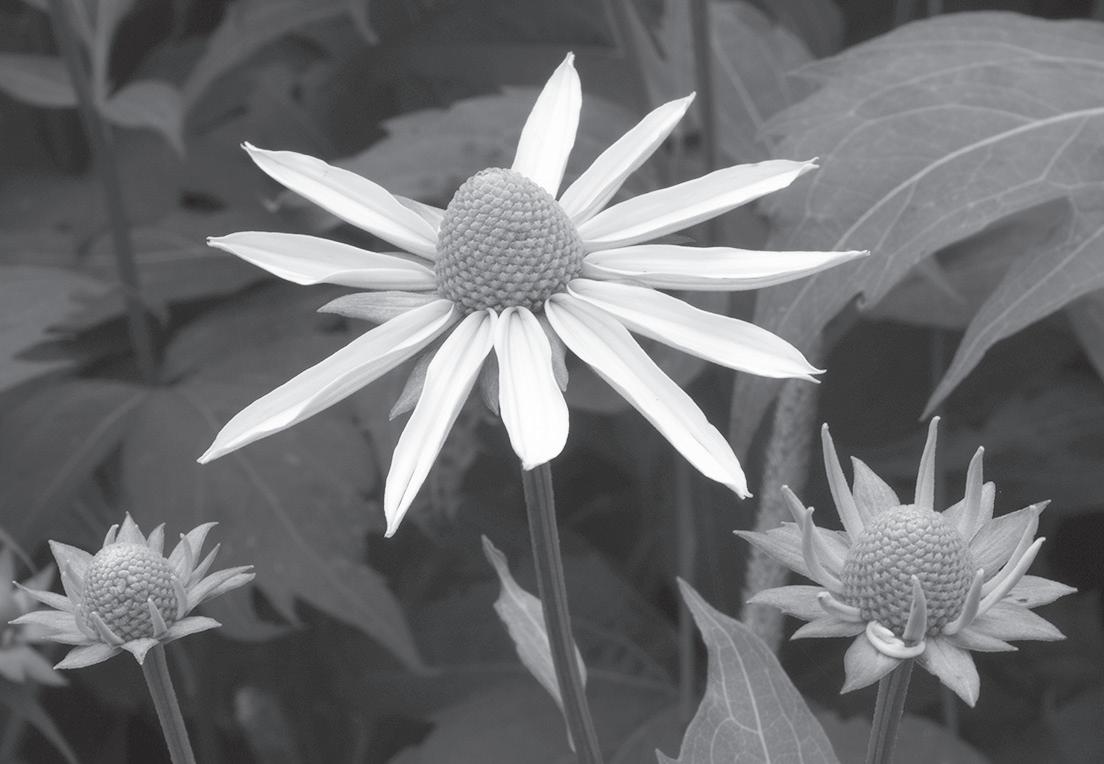
3 minute read
National Park News
Words with a Ranger continued from page 1
In recent years, visitors have moved rocks to create dams, channels, and cairns to such an extent that it has changed the aquatic habitat, leading to the death of thousands of aquatic animals. Salamanders, fish, and dragonfly larvae are just a few of the creatures that make their homes and nests under the rocks in the streams. Species like the eastern hellbender are so rare that the streams in the park are some of the last places they can be found. To an aquatic animal, moving rocks is like cutting down a tree that supports a bird’s nest. It harms the adults, eggs, and young.
What can you do? Leave no trace, so future generations are able to enjoy the park and all the species that call it home. Share with others how they can help to protect the park. Thank you for not moving rocks and sharing this message with your friends and family.
Cades Cove Access Update The Cades Cove area is now open to all visitors via Laurel Creek Road from the Townsend Wye entrance to Great Smoky Mountains National Park. Visitors to the popular Cades Cove Loop Road this spring can expect greening fields, emerging wildlife, blooming wildflowers, and flowering trees. Camping and picnic areas are also available in the area known for its historic structures and hikes to nearby destinations including Abrams Falls and Gregory Bald. Cades Cove was closed to visitor traffic over the winter due to scheduled repairs to the Bote Mountain Tunnel in January and February 2020. The decision to close this area of the park completely to accommodate the repair was reached through NPS assessment and with the input of community leaders in favor of avoiding prolonged lane closures throughout 2020. The necessary
Two gravel roads, Sparks Lane and Hyatt Lane, connect the north and south sides of the 11-mile, one-way Cades Cove Loop Road. Allow at least two to four hours to tour Cades Cove, longer if you walk some of the area’s trails. Image courtesy of Diego Ferron
updates to the 72-year-old Bote Mountain Tunnel include repaired cracks in the concrete liner and replaced drainage features. Such repairs are a necessary part of maintaining aging facilities in the Smokies and across the national park system, much of which is currently impacted by the estimated $12 billion in deferred maintenance to national park infrastructure as a result of increasing demand and limited resources. As visitation continues to break records in the Smokies, projects like the Bote Mountain Tunnel repair will help make sure the Smokies continue to be safe and accessible for years to come.
Cherokee Sochan Agreement Enters First Full Season This spring marks the first full harvesting season since the Eastern Band of Cherokee Indians (EBCI) and the National Park Service finalized a landmark agreement to allow a limited number of permitted EBCI members to harvest sochan for traditional food purposes within Great Smoky Mountains National Park (GSMNP). Sochan, or green-headed coneflower (Rudbeckia laciniata), is a culturally significant food of the Cherokee, and going to the mountains to gather its young leaves is a family tradition considered by some to be sacred. The tall, late-summer-blooming wildflower is common along streams and wet areas throughout the park. “It was a great opportunity to collaborate with the EBCI on this project,” said Josh Albritton, a park bio-science technician. “Maintaining long-standing cultural values and traditions is important for all of us, and this is certainly an opportunity to do just that.” Despite a delayed start last year, the first harvest “went very smoothly,” said Albritton. “All sochan harvesting and reporting by EBCI permittees went according to the guidelines.” This year, park staff will continue to monitor designated sochan populations and assess other plants EBCI members may wish to harvest. “I think everyone involved is looking forward to the coming season,” said Albritton. With the exception of such permits, federal law protects almost everything in national parks, including wildlife, plants, historic objects, and even rocks. Exceptions include game fish (with catch limits) and berries, nuts, and edible mushrooms (for personal consumption only).

Green-headed coneflower, or sochan, is known for its showy late-summer blooms, but it is the young spring leaves, emerging well before the flowers, which are sought by the Cherokee as a favorite spring green. Image courtesy of GSMA.








